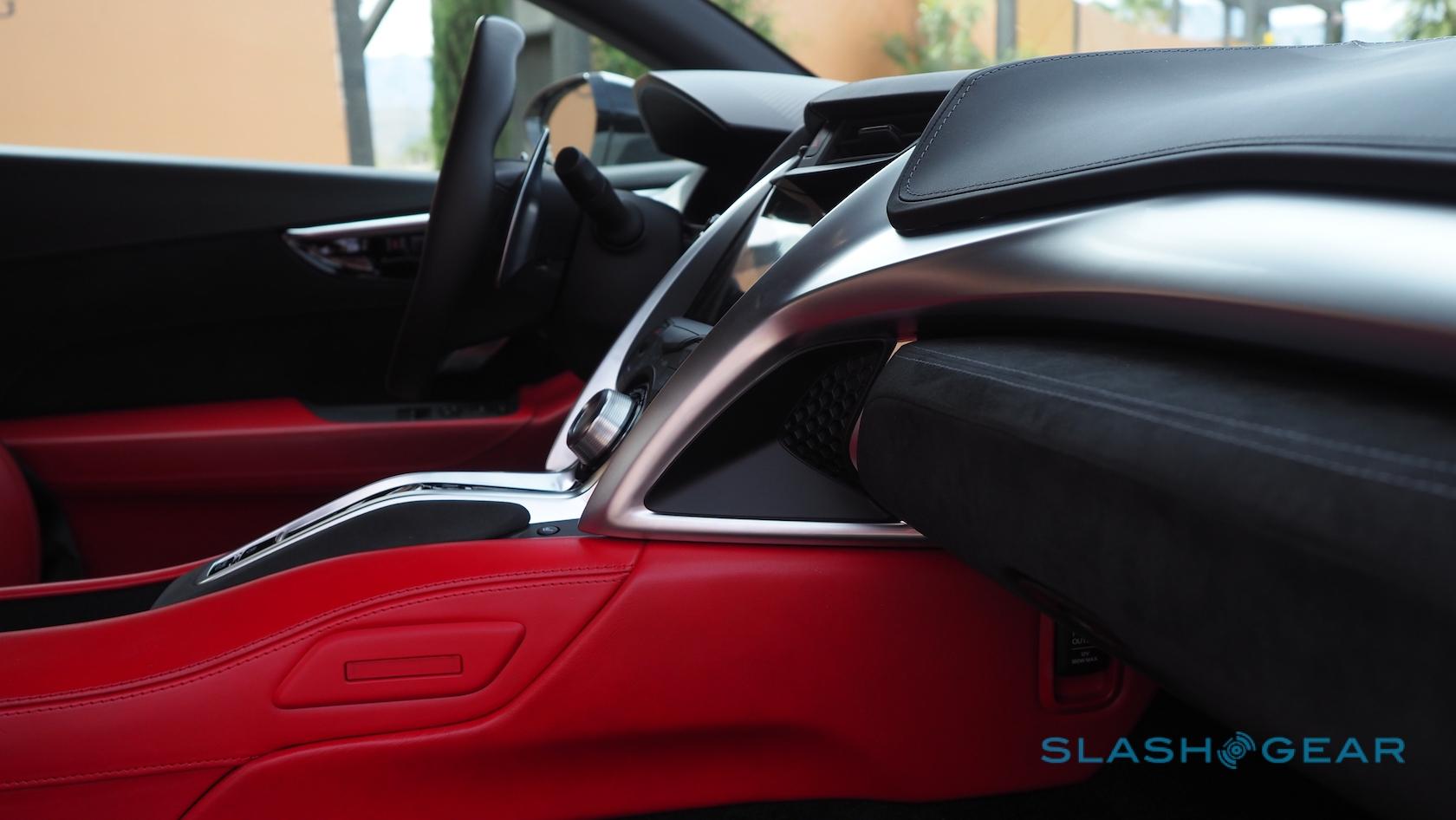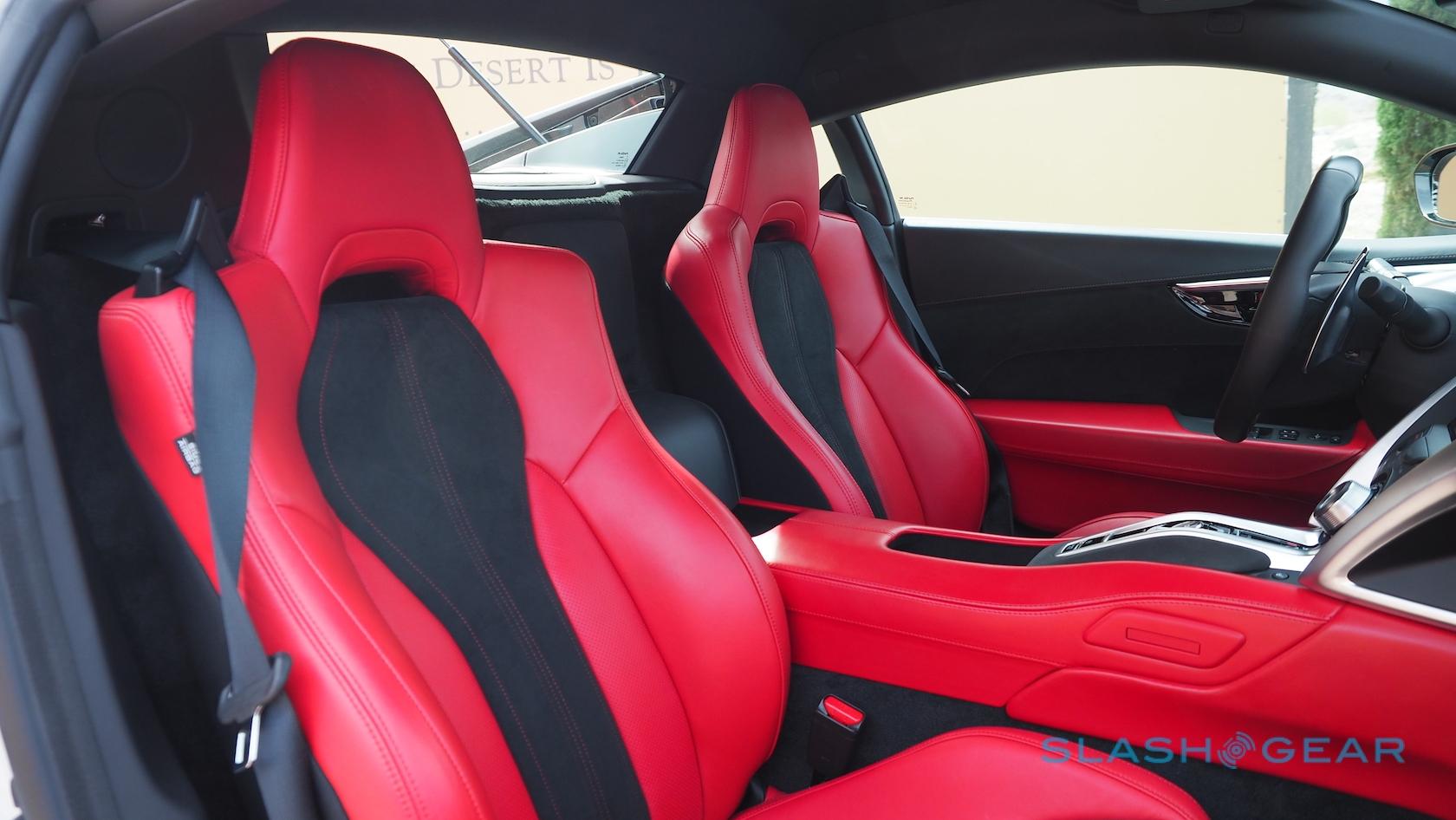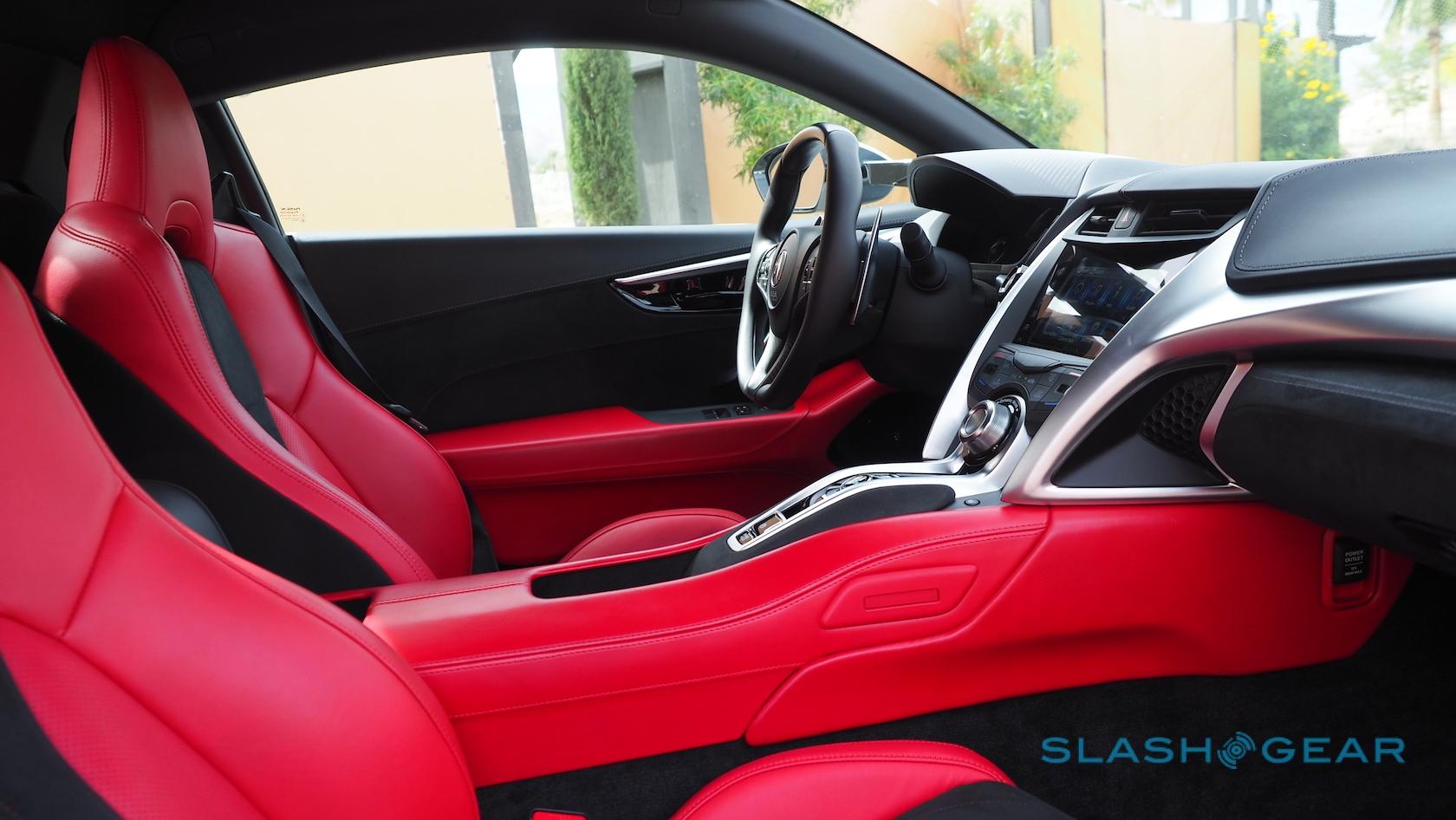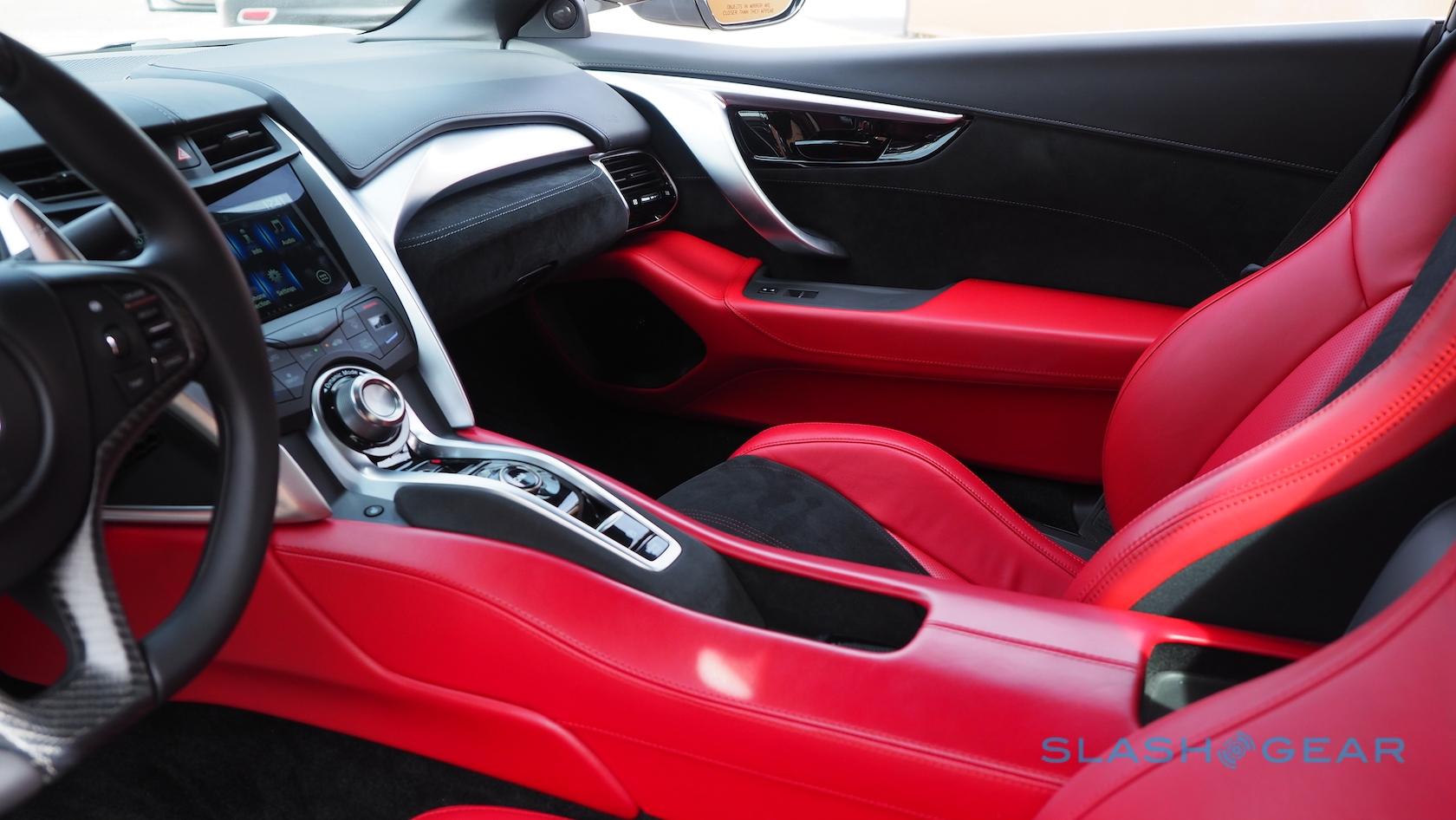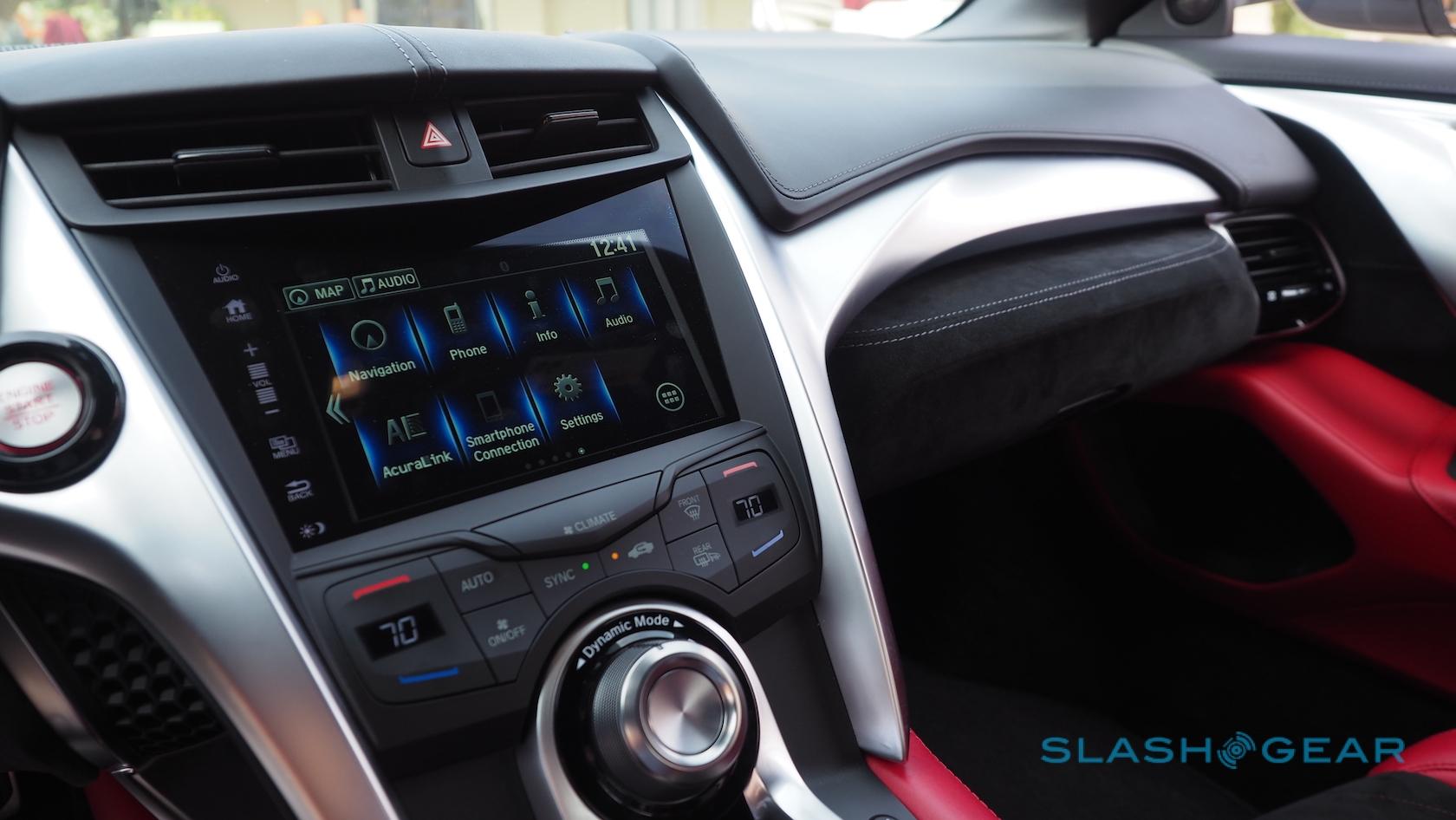2017 Acura NSX First Drive
Patience is a virtue when you're waiting for the next must-have supercar, but the 2017 Acura NSX has demanded more faith than most. Daring to reboot an icon – and that's certainly what the original NSX was – not only puts you squarely in the crosshairs of its most ardent, vocal fans, but levels big questions from the outset. Will the new NSX be the supercar-for-the-everyman-driver like its daddy was? Can it be both a brand beacon and a legitimate future-classic in its own right?
I certainly had those thoughts in mind when Acura invited me to Palm Springs, California for some much-anticipated track and road time with the second-generation NSX. More than that, though, I was deeply curious whether the car's long and turbulent incubation period had ended up overcooking the driving experience while chasing technical complexity.
The design has more restraint than many of the NSX's rivals. There are no crazy swoops, no melodramatic fins. Instead, there's a finessed version of the Acura snout, big – and functional – cooling intakes on the sides, and a chunky tail.
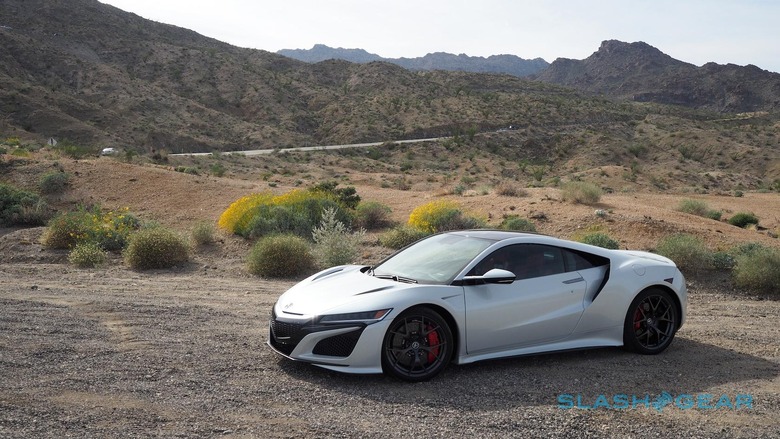
Details are there if you go looking. The pop-out door handles are a neat touch, and the side mirrors on their long, almost delicate stalks are things of beauty. You can follow the path of the airflow up, over the wings, back down the glass engine cover, and then through vents cut through the bodywork by the rear lights.
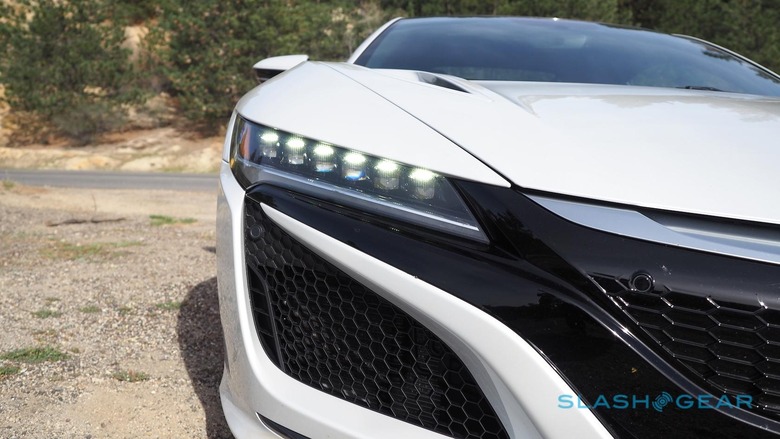
Personally, I still find the front a little fussy, but it's a striking, purposeful wedge in profile. Acura's standard-fit wheels, with their Y-spoke design, are surprisingly the lightest option; the $1,500 upgrade gets you a different look and a little extra weight, but were it my order I'd save my money, or put it toward one of the carbon fiber styling packages which include a new roof, lip spoiler, engine cover, and other components.
Aesthetically it may look much the same as it did back in 2012, when the first Acura NSX Concept was revealed. That didn't stop it drawing a crowd whenever I parked, mind, and under the sheet metal the engineers have been on a huge journey.
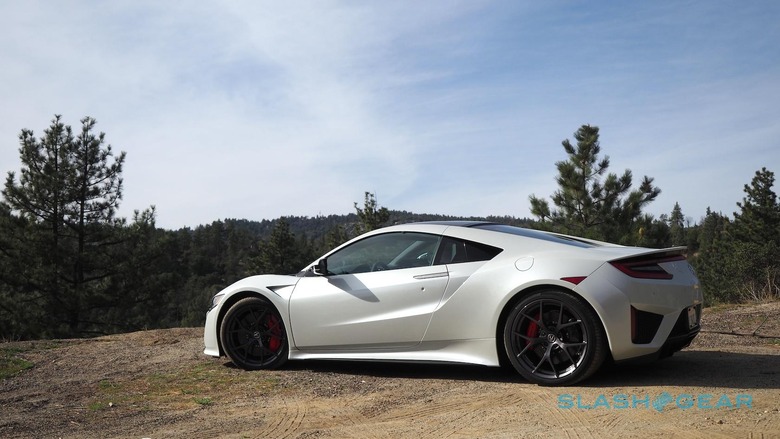
Originally, the reborn NSX was to use a gas engine. As the project progressed, however, a new and far more ambitious idea took hold. The 2017 NSX would be a hybrid, not merely in some pious nod to economy but to harness the very best abilities both of gasoline and electric drivetrains. That meant raw power, certainly, but also its application.
The result is unlike anything currently on the market, and worth geeking out on for a moment. On the one hand, the NSX has a 3.5-liter, twin turbo V6 engine mounted just behind the driver's head and which, on its own, is good for 500 horsepower and 406 lb-ft. of torque. It'll rev to a 7,500 rpm red line, and is combined with a 9-speed, DCT transmission.
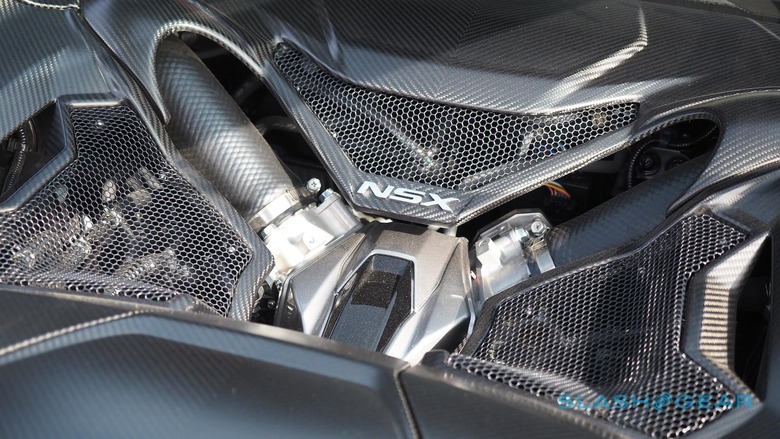
There are three electric motors in the mix, too. One is hooked up to the gas engine and dubbed the Direct Drive Motor: it may only contribute 46 horsepower to the rear axel, but it also adds 109 lb-ft. of torque from just 500 rpm.
At the front are two more, grouped together as the Twin Motor Unit. Effectively, each drives one of the front wheels, though there's actually a complex one-way clutch, double-pinion gear mechanism used for torque multiplying, and a brake in-between them. Each has 36 HP and 54 lb-ft. of torque, the latter kicking in at 0-2,000 rpm.
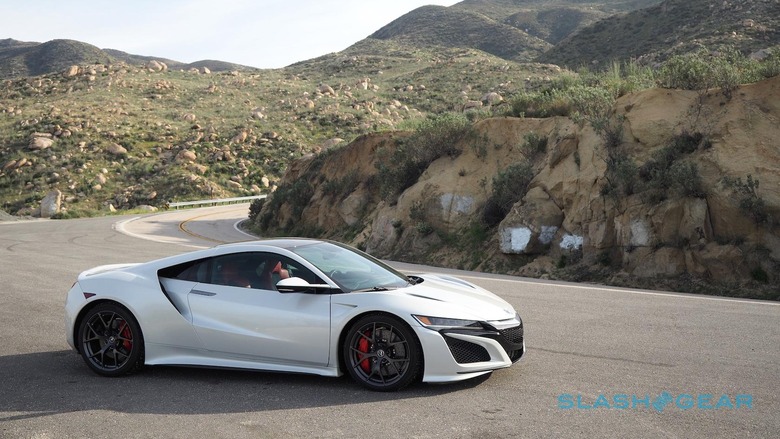
What's clever – hugely, enticingly clever – is how the combined power from all four of those sources is applied. The rear electric motor is responsible for torque-fill: its grunt comes in quick, smoothing out the turbo lag before the gas engine unleashes its own power.
The front electric motors, meanwhile, contribute additional force and give the NSX its all-wheel drive. Altogether, combined power is 573 HP and 476 lb-ft. of torque when the car is at full bore.
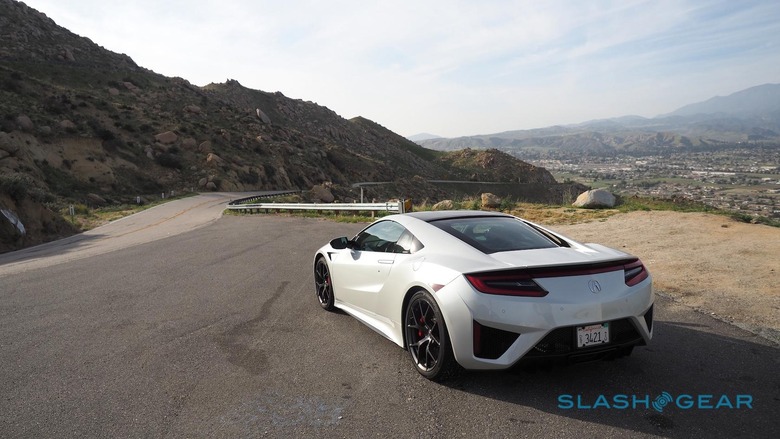
That masks a whole lot of nuance, however. Since the Direct Drive Motor is separate from the transmission, for instance, it can be used to smooth out shift gaps. The brief, slight dip in power when you change gear – even with the fastest of sports boxes – is filled in by the electric motor's power.
More impressive still is how Acura uses the front motors. It's called Sport Hybrid Direct Yaw Control – it falls, for marketing purposes at least, under the same SH-AWD banner Acura has used for some time now – and it's effectively the next generation of torque-vectoring.
Traditional, mechanical yaw control works by splitting the engine's torque left to right, making yaw movement, via a differential. It works, certainly, but it's most effective when the car is accelerating while cornering. More importantly, the torque only ever operates in a single direction: forwards.
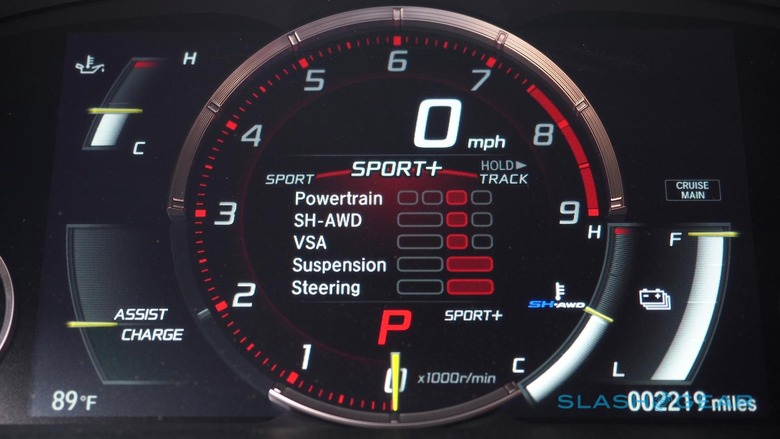
With its pair of independently controllable electric motors, one for each front wheel, however, the new NSX can generate torque on both the left and right sides of the car simultaneously. It can add torque on one side, during turning, and drag to the other, tightening the turn in the process.
It's a lot of technology, but that's nowhere near the end of it. The new NSX gets magnetic ride control, with third-generation magnetorheological dampers that modulate their stiffness in real-time according to the conditions of the road, along with variable ratio steering that, as you get off-center, the response of which quickens mechanically.
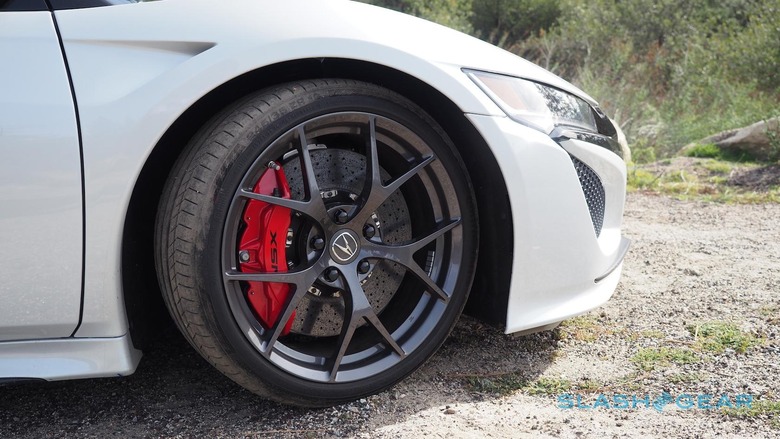
Even the brakes are something special, with electro-servos that combine both regenerative slowing and the physical bite of the Brembos – six-piston up front, four-piston at the back – with ABS to smooth the transition in-between. What you feel through your foot is actually entirely disconnected: it's a brake-by-wire system, with a force simulator lending the pedal the right degree of resistance while sensors calculate how best to blend the two systems based on your apparent eagerness to slow.
There's a potential risk when you fill a car with the cutting edge, that in the process you make it more about the technology than the experience. Some of the most engaging, emotionally stirring cars are also the least technical: their visceral nature comes from the fact that you are so narrowly separated from the mechanics of the machine.
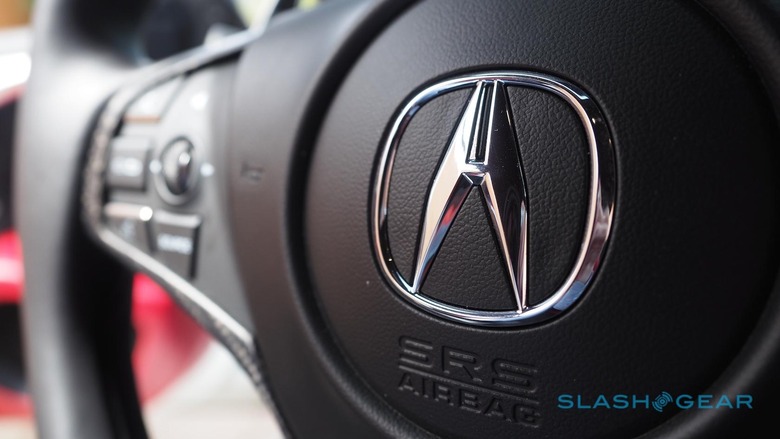
In contrast, the most technically-adept, thoroughly modern and – on paper, at least – better cars can insulate you from that engagement because the gadgetry simply gets in the way.
That was, I confess, my primary concern about the NSX. Acura has clearly not lacked for vision, but would it lack for soul? When I went to Japan to drive a prototype last year, the day was 95-percent engineering talk and, finally, 5-percent driving. A few laps on a track and the keys were taken from me; I worried that, in its quest to make a marvel, Acura had diluted what would also make it marvelous.
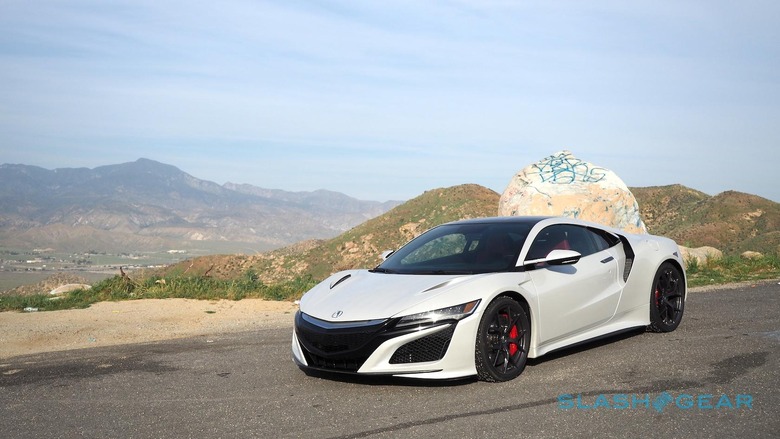
On the road, at first it seemed like my fears could have been well founded. The NSX has four drive modes, flicked between with a huge dial in the center console – it's the second largest individual control in the car, after the steering wheel, which gives you some idea of how important Acura sees it to the NSX experience – with your choices being Quiet, Sport, Sport+, and Track. The dashboard graphics change according to each.
Quiet aims for all-electric travel, leaving the gas engine shut off as much as possible (a stab at the gas pedal will rouse it). Sport is the default, with a balance of gas and electric depending on road conditions and your driving eagerness.
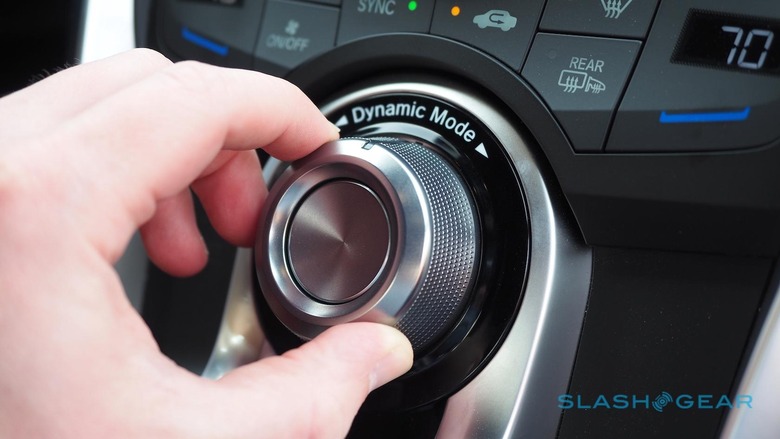
Sport+ gets more aggressive, with the gas engine always active and the electric drive filling in the gaps. The suspension and steering are sharper and more direct, too, though not quite as much as in Track, the final mode, and where everything is turned up to the max.
My immediate disillusionment could've been fixed had Acura called Sport mode "Tour", instead. That's really what it's actually about: turning the NSX into a comfortable Grand Tourer that eats up distances with aplomb. Cruising down the freeway in Sport mode, you could easily convince yourself that you're behind the wheel of a TLX – albeit a low-riding one – with its compliant suspension and unthreatening power delivery.
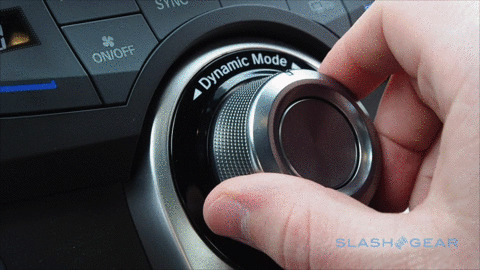
That's great – not everything needs to be howling banshees and hair-trigger throttle – but it's definitely not especially sporty, and neither is the plentiful oversteer. Best, then, to give the knob a flick to the right and find at least Sport+ mode.
It's there that the NSX begins to really show its colors. No longer having to juggle gas or electric, the car simply throws them both at the road. The Direct Drive Motor may be relatively small, but it's astonishing the impact it has on gear changes: whether you pull the crisp metal paddles yourself, or let the 9-speed do the shifting itself, there's hardly a hiccup to be felt as the cogs switch.
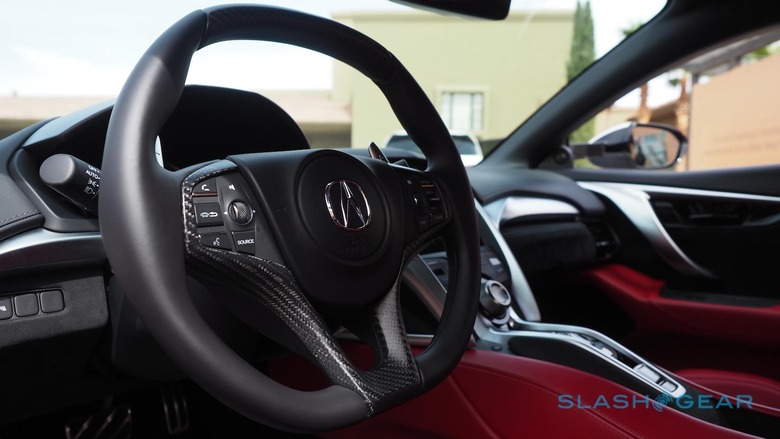
It came alive on the canyon roads outside Palm Springs, tight turns and dramatic changes in elevation as soaring walls of blush rock crowd the corners. In a lesser car you might be tempted to ease off, but the NSX dances through. Flick the wheel – thanks to that variable ratio steering I never had to move my hands from nine and three – and the car seems almost to pivot around its midpoint, allowing you to not only hold on to more speed through the corner, but get back onto the power sooner as you exit.
The regenerative brakes mimic the best of engine braking, slewing speed when you lift only to hurl it, with the instantaneous torque electric motors gob out so delectably, back when you slam your right foot once more. Push deep into the brake pedal, meanwhile, and regenerative blends almost seamlessly with the Brembo setup, predictable and sharp.
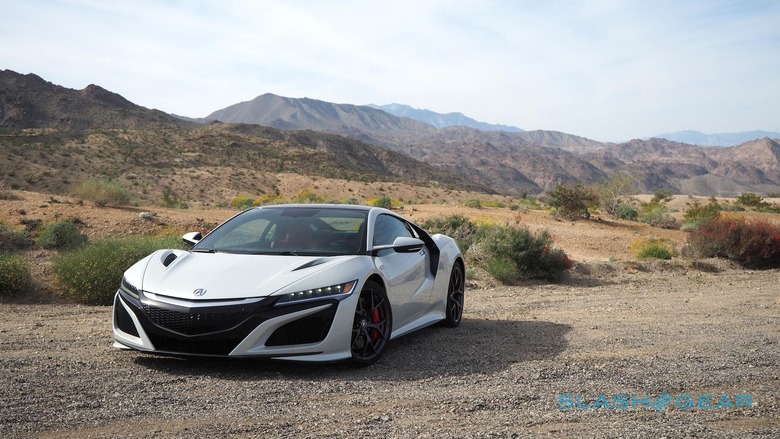
Meanwhile, your soundtrack is distinctly mechanical. Like many car makers, Acura pipes engine noise into the cabin; unlike many, that's not some artificial roar through hidden speakers. Instead, ducting brings the actual V6 sound to hidden ports behind each seat. Combined with active exhaust valves, there's a full 25 db of difference in volume between Quiet and Track.
Ferocious sound, though, is only one of the advantages Track mode delivers, and to test that out Acura let us loose on the Palm Springs Thermal Club racetrack. It also switched the standard-fit Continental ContiSportContact 5P tires for a decidedly grippy set of Michelin Pilot Sport Cup 2 tires, which will be an option (as were the $9.9k carbon-ceramic brakes fitted to our test car).
The combination of mode and new rubber effectively oust the understeer. In Track you still get some of the traction control, though it takes a definite backseat, helping nudge the NSX onto the most successful line. You can, if you want, turn it off altogether, but then you run into an issue.
A side-effect of the exceeding clever SH-AWD system is that Acura's electric power steering lacks in road feel. It's precise and the variable ratio sheeting means even hairpin corners were dispatched with no hand-over-hand scrabbling, but there's a real lack of communication from the road underneath.
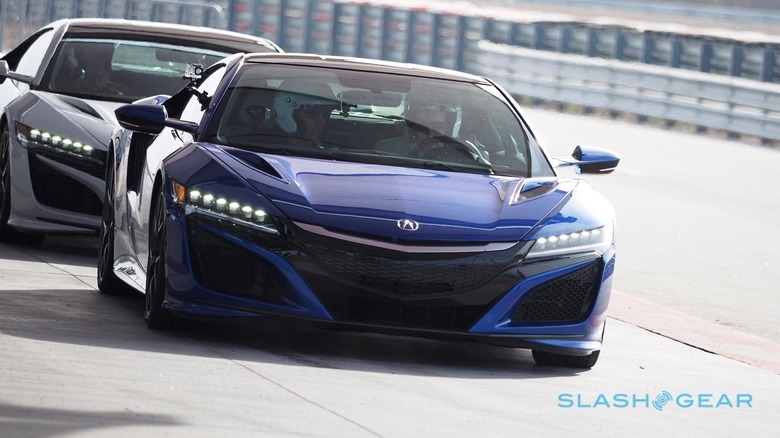
It's not the only blip. The gearbox locks out some of the upper gears in Track mode, preferring to hold on high in the rev range of the lower ratios, but it's not a fan of being second guessed. At times, you slap the paddle and the transmission simply ignores you: NSX knows best, apparently.
Saying that, even if the shifts weren't exactly where the pros might have them, Acura's homegrown transmission smarts – it built the gearbox itself in a mere eighteen months – were more than enough for my middling track skills. It lets you focus on the incongruity of pushing down more power, earlier in the turn; while it might feel like bad advice if you're beginning to understeer, in reality it allows the yaw control to step in and neatly pivot the front end around.
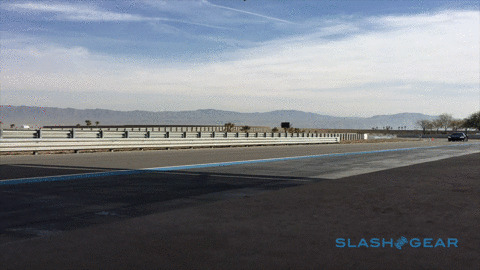
Track is, finally, where you find Launch Control. It's easy to use, too: hold the drive mode knob to the right for a few seconds to switch into Track, then plant your left foot on the brake, your right on the accelerator, and after a moment or two a terse "Launch Mode" message pops up on the screen. After that, it's a case of lifting off the brake and marveling as the NSX hurls itself, free of tire squeal, smoke, or skid, down the road.
Acura isn't talking precise performance numbers bar the 191 mph top speed, but the 3-something second ballpark for 0-60 mph is a good place to start baiting Porsches from. Not bad for a car tipping the scales at around 3,800 pounds.
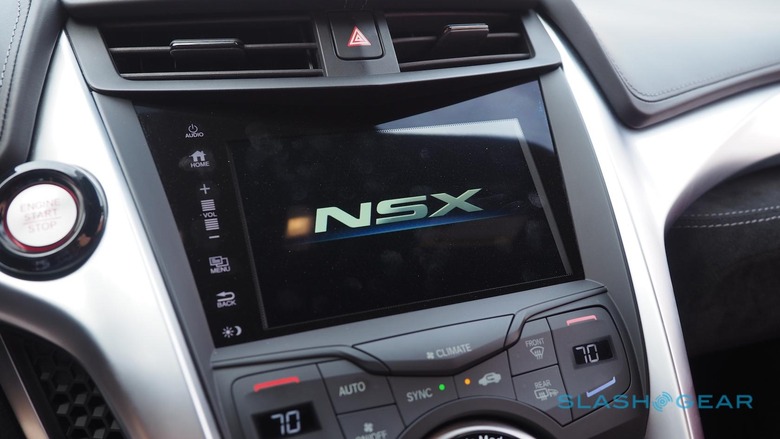
The expectation, the NSX team tells me, is that a majority of owners will take their car out to the track at least a couple of times a year. They'll be able to drive it all the way there and back again, too, what with the high degree of practicality. My test car was fitted with the $1,500 power sport seat package, which adds 4-way power adjustment and heating, along with a combination of leather and Alcantara trim, and they're comfortable and supportive. I've no reason to assume the standard-fit manual seats are any less cosseting.
Headroom is generous, and the standard 7-inch touchscreen gets Android Auto and Apple CarPlay as standard, plus a 225W, 8-speaker audio system (but, scourge of current Honda and Acura cars, no physical volume knob). Cough up $2,800 and you can have the specially-developed ELS Studio Audio & Technology Package with 580W spread across nine speakers, navigation, and front and rear parking sensors. After a day being pushed hard, the NSX's computer bashfully admitted it was still returning 19 mpg.
Given how much thought Acura has clearly put into the NSX, the fact that its few blips glare so brightly makes them all the more baffling. My biggest complaint is with the interior, or more accurately the choice of materials.
In a $35k car, you expect some plastic. In a would-be supercar that starts at $156,000 and – if you check the right options – can easily end up over $200k, I'm a lot less willing to stomach it. A fair percentage of the NSX's primary touch points are, frankly, underwhelming and even stray into cheap-feeling territory.
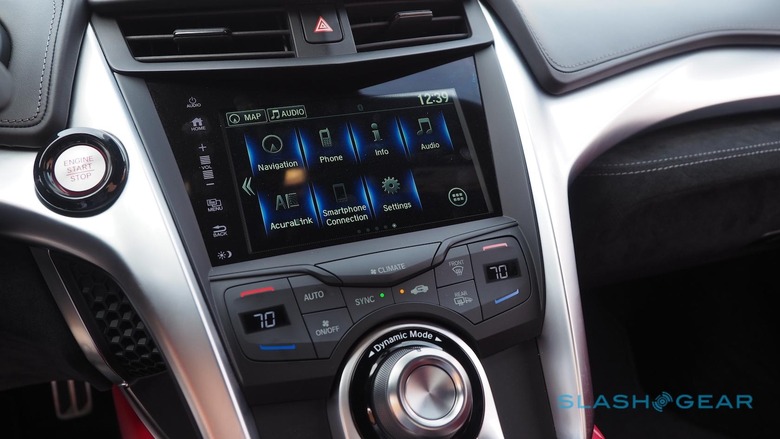
That all-important drive mode knob? It's plastic. The swooping grab-handle trim on the door panels? Plastic. The gear selector buttons? Plastic, and seemingly lifted from the TLX in fact. The shiny silver framing for the center console? Aluminum-effect plastic.
If it sounds like I'm belaboring the point, remember, the second-generation NSX is meant to be Acura's aspirational reboot. What could've been "A Moment" – reaching out to notch the NSX into Sport+ mode and wake its technological prowess at the same time – has been squandered, all for, presumably, the couple of dollars saved by not opting for milled aluminum or magnesium alloy.
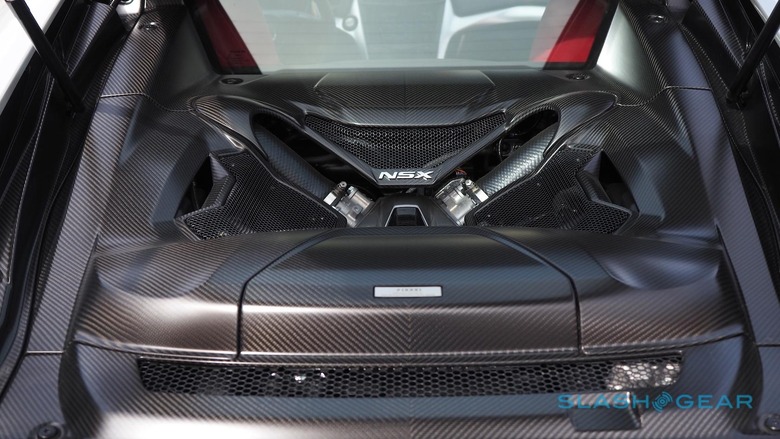
It's all the most astonishing when you consider the ways in which the cabin is a thoughtfully constructed, ergonomic success. The squared-off steering wheel which eschews contrast stitching because, though eye-pleasing, it can be uncomfortable to grip during fierce driving, for instance. The intentionally lowered instrument cowl that maximizes visibility through the windshield.
The fact that Honda went to the effort of developing its own manufacturing technology to create the narrow-gage A-pillars that intrude so little into the NSX's vista.
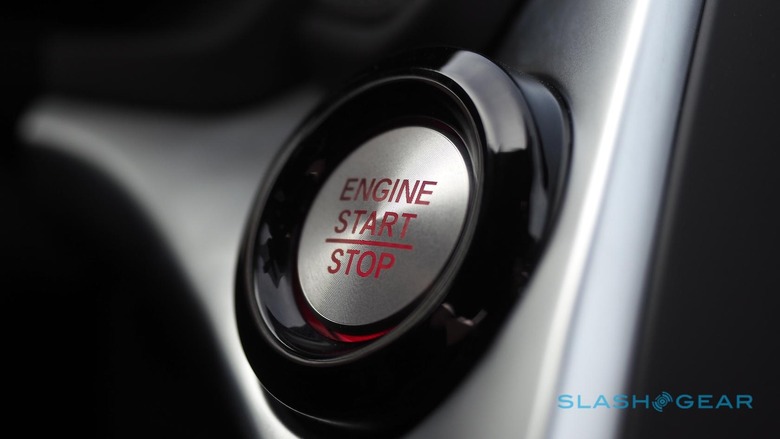
The other niggles are just that, minor annoyances. Some of my colleagues felt the NSX's various engine noises lacked refinement, though while I didn't necessarily share their concern, I wouldn't argue with a more engaging sound than the whining scream of the turbocharged V6. There's still a time and place for a V8 engine, not least echoing in your eardrums.
I'd like to think that Acura, after a year or so of owner feedback, will get the message and tweak out the few motes in the NSX's eye.
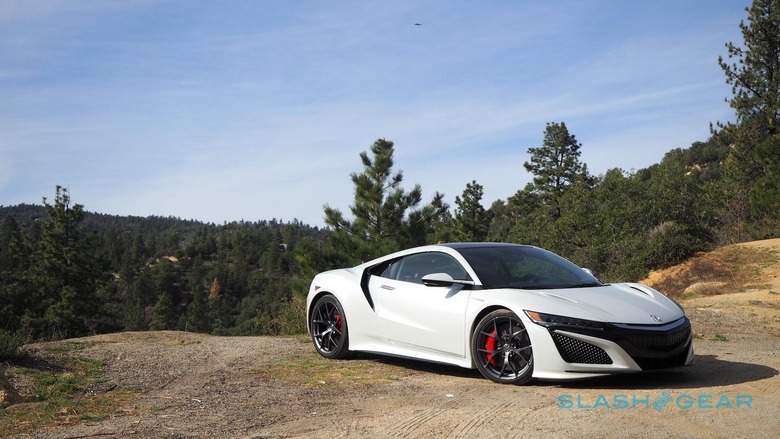
That audience will be small. Acura only expects to sell around 800 cars in the US each year, exclusive even by supercar standards. Each will be built-to-order in the new Performance Manufacturing Center in Ohio, making the NSX the only US-made supercar on the market today.
There is a danger, when you've waited for something a very, very long time, that the reality cannot hope to live up to the expectations you've built. The promises are so great, and the anticipation so fierce, that no matter how good the reality it'll always pale in comparison to the fantasy in your head.
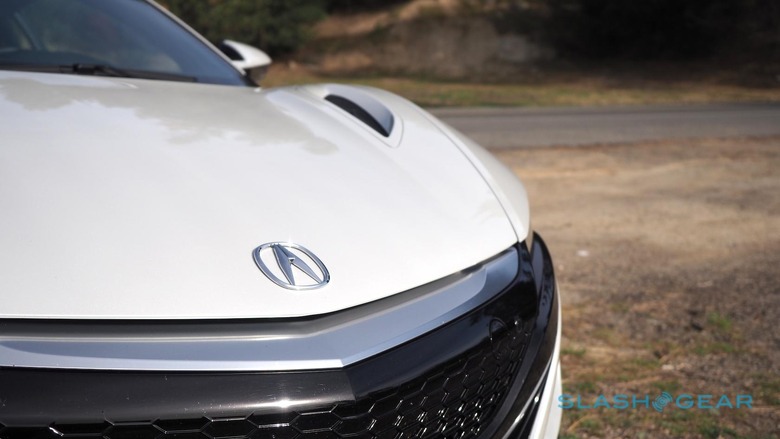
The 2017 Acura NSX is not what I expected it to be. I predicted technical precision and astonishing performance, but underestimated the extent to which Honda's engineers would push their envelope in order to deliver that. I imagined polish, but I was worried it would lack the soul of a supercar. It has something else, instead.
Honda and Acura engineers are a well-trained bunch, they can't help but think practically. Even when they're making a luxury performance vehicle, they instill it with the same degree of ease as you might find in a Civic. Forget talk of "practical" exotics like the Ferrari you can drive to the store, or the McLaren sufficiently behaved for the school run: the NSX is, when it comes to fitting into your life rather than reshaping it around its own demands, the real deal.
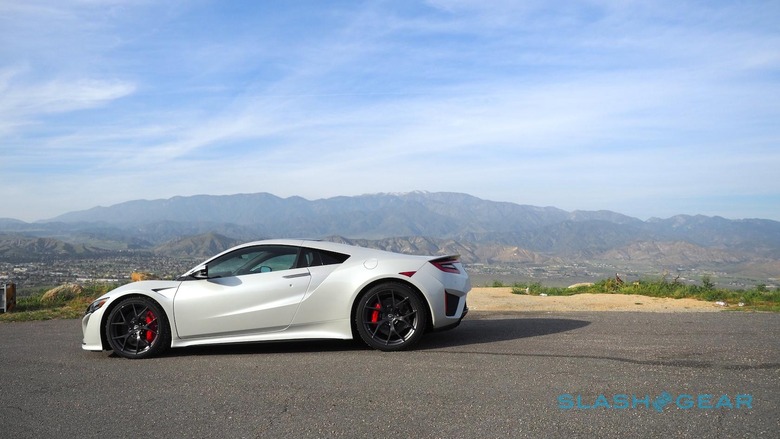
It's also the real deal when you push it. That means Sport+ mode on the road, and Track mode on the track, and making sure you don't forget that, just because it can cosset, that doesn't mean the NSX is only capable of one thing. There's none of the usual supercar compromise, and I suspect that's been misinterpreted by many as it being diluted in some way: we expect and even demand a little masochism with the exotic ownership experience.
The original NSX name stood for "New Sportscar eXperimental", a car with the performance of a Ferrari but the reliability of a Honda. Rivals in the segment have raised their game across the board since 1990, though, and the new frontier blends hardware, software, and innovative drivetrains. That's where the "New Sports Experience" plays, a siren song of mesmerizing speed through mind-boggling engineering. The 2017 Acura NSX is about as far away from every other supercar as you can imagine, and that's exactly how it should be.
[gallerybanner p="431326"]

